What is the purpose of the Sunny 16 rule? The Sunny f16 rule helps you estimate which camera settings to use for a balanced exposure. As the name suggests, it’s for shooting outdoors during sunny days. In this article, you’ll learn more about the famous Sunny 16 Rule. [ExpertPhotography is supported by readers. Product links on ExpertPhotography are referral links. If you use one of these and buy something, we make a little bit of money. Need more info? See how it all works here.]
Sunny 16 Rule in the Digital Era
In the past, the Sunny f16 rule or 16 rule was a must-have in a film photographer’s bag of tricks. This photography rule acts as a metering system when you don’t have a light meter. But nowadays, built-in light meters are present in every device. From the cheaper camera phone to the pro-graded DSLR camera. Nonetheless, the Sunny-16 Rule can still serve you well in several ways:
It makes you work faster in manual with your digital camera; It makes it easier to experiment with film photography. For example, when shooting large format 6×6 film; It’s a useful exercise to improve your ability to read the available light. With a light meter app on your smartphone, you can check the settings you would use against those suggested by the app.
How Does the Sunny 16 Rule Work?
The Sunny f16 rule states that, on sunny days, at an aperture of f/16, your shutter speed is the inverse of your ISO value. This means that if you are at, say, aperture f/16 and ISO 100, your shutter speed should be 1/100 seconds. This is one of the easiest photography rules to remember. It is a great starting point, as you will no doubt want to change your exposure settings based on the reflected light available.
The Exposure Triangle
The Sunny-16 rule works on the so-called exposure triangle. Your image exposure is the combination of the aperture, shutter speed and ISO values. The triangle assumes you can get the same exposure by changing those values. When the lighting conditions change, you can raise your ISO, shutter speed or aperture to reach the correct exposure. Say you’re using aperture f/16, ISO 400 and shutter speed of 1/400s. You get the same exposure with the following settings combinations: The over- or under-exposure appears in the brackets. Not all cameras and lenses allow you to shoot at f/16 or narrower apertures. For example, my Sony RX100 does not close more than f/11. Micro four-thirds cameras start to suffer from diffraction over f/8.
Similar Rules
It is not always sunny outside. Some days are pretty dark, and the sunny f16 rule does not fit those conditions. For this reason, there are different rules depending on the weather. The sunny 16 chart below illustrates the conditions for which the different rules apply:
Sunny-16 Rule: when photographing in an open field during a sunny day; Slight Overcast-11 Rule: when the sky is variable; Overcast-8 Rule: cloudy weather, but not dark; Heavy Overcast -5.6 Rule: bad weather, maybe rainy; Sunset-4 Rule: for typical sunset conditions; Snowy-22 Rule: If the sun is shining over a snowy landscape, f/22 is the suggested aperture. You get a balanced exposure using a shutter speed that is the inverse of your ISO.
The principle is the same as for the Sunny-16. In overcast conditions, follow the Overcast-8 Rule. To achieve a shutter speed of 1/100s, you should set your camera to f/8 and ISO 100. Let’s see a couple of examples:
A classic light that suits the Overcast-8 Rule better than the Sunny 16.
A typical situation for the Heavy Overcast-5.6 rule.
Forget the Weather, Read the Shadows
To estimate which rule best matches the light conditions, look at shadow hardness. Actual sky conditions can be misleading. In this photo, the sky looks great and clear, but some clouds are blocking the sun. As you can see, there are no shadows on the ground. In these conditions, the light meter of my Sony RX100 Mk II camera tells me that a balanced exposure is obtained at ISO 100, f/11 and shutter speed of 1/100s. This is the Slightly Overcast-11 rule. With very soft shadows or no shadows at all, you want to use the Heavy Overcast-5.6 rule. The Sunny 16 works best with hard, deep shadows. Anything in-between is for the Overcast-8 or Slightly Overcast-11.
Applying the Sunny-16 Rule in Real Life
These rules are not exact. Reality is not made of individual factors (sun, clouds, heavy clouds, etc). It is an ever-changing mix of different factors, and there are no bulletproof rules. This is why it’s important to know how to read the light, particularly for an outdoor photographer. Let’s consider the image below. You can see very strong shadows on the ground. However, the in-camera light meter is telling me that to have a shutter speed that is the inverse of my ISO (i.e., 1/100s). Instead, I should use an aperture of f/5.6, and not f/16 as the hardness of the shadows would suggest. Why? Because due to the strong foliage, the scene is rather dark. Compare it to the brightness of the image below, taken only a few minutes later and under the same kind of daylight. This image of open ground follows the Sunny 16 rule. In general, open ground images are much brighter than those taken under the canopy of trees.
Conclusion
The modern digital photographer does not need to memorise these rules, thanks to the in camera light meter. But practising with the sunny-16 rule is a great exercise to learn to read the available light. You can use our Quick Capture cheat sheets to have all the top photography rules at your fingertips. Start practising right away! Take a look out the window: is that ‘use the sunny 16 rule weather’ or something else?


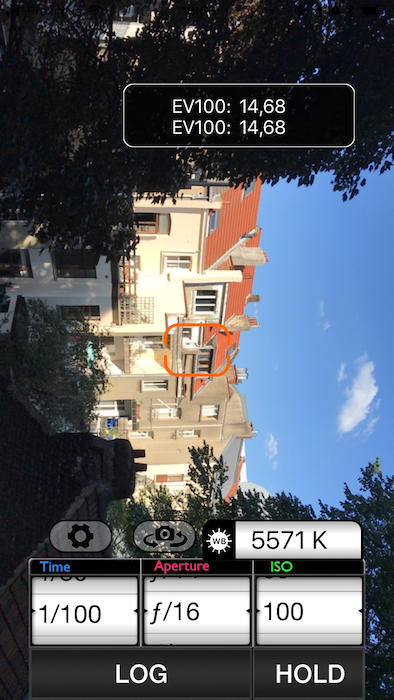

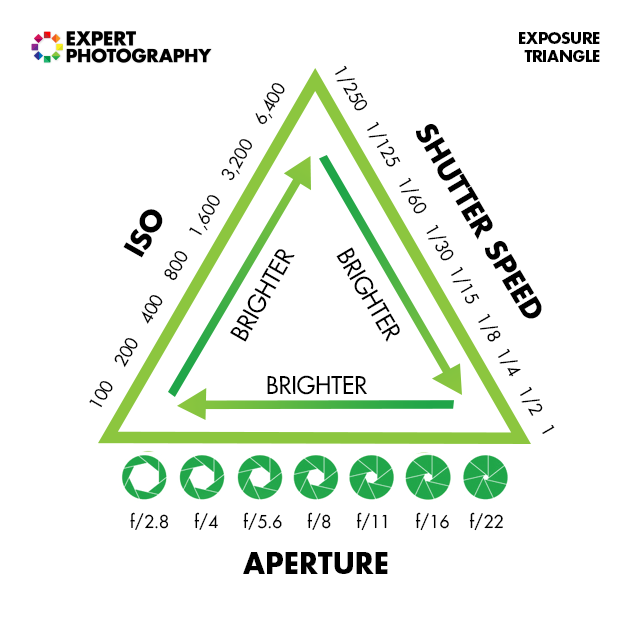


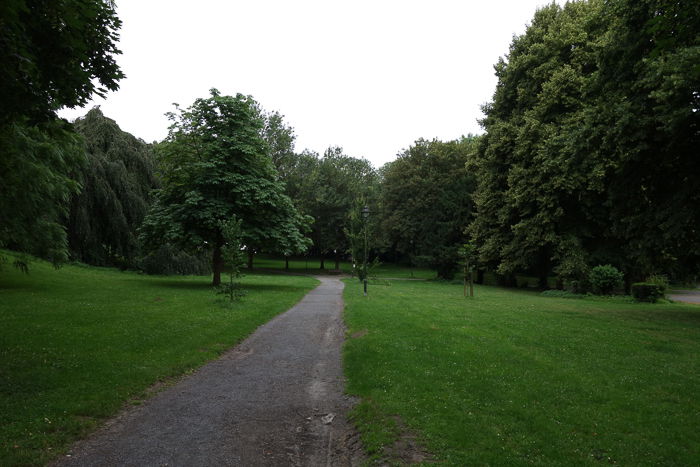

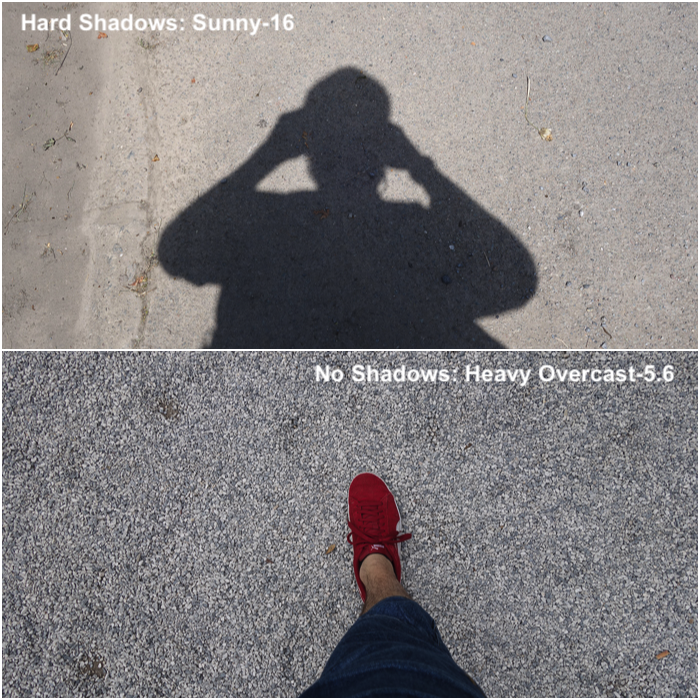
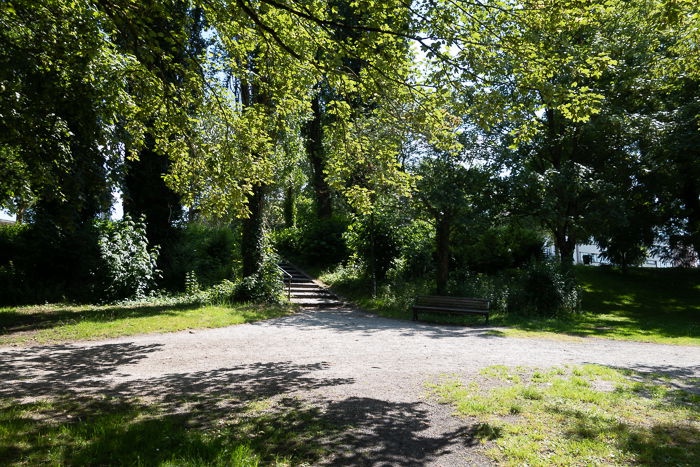
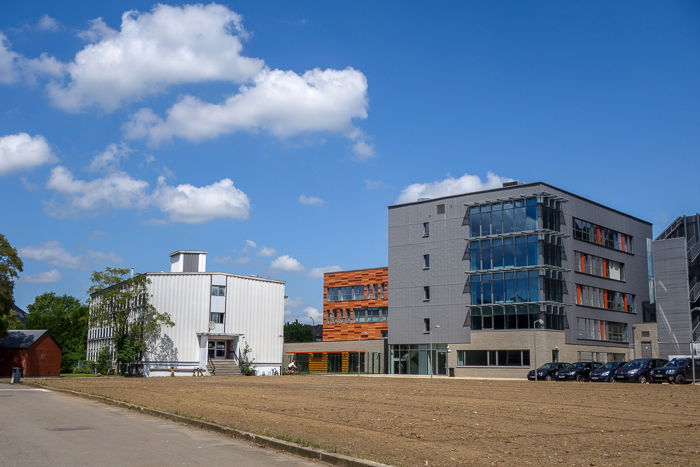


title: “How To Use The Sunny 16 Rule And Other Exposure Settings " ShowToc: true date: “2023-02-05” author: “Sandy Hall”
What is the purpose of the Sunny 16 rule? The Sunny f16 rule helps you estimate which camera settings to use for a balanced exposure. As the name suggests, it’s for shooting outdoors during sunny days. In this article, you’ll learn more about the famous Sunny 16 Rule. [ExpertPhotography is supported by readers. Product links on ExpertPhotography are referral links. If you use one of these and buy something, we make a little bit of money. Need more info? See how it all works here.]
Sunny 16 Rule in the Digital Era
In the past, the Sunny f16 rule or 16 rule was a must-have in a film photographer’s bag of tricks. This photography rule acts as a metering system when you don’t have a light meter. But nowadays, built-in light meters are present in every device. From the cheaper camera phone to the pro-graded DSLR camera. Nonetheless, the Sunny-16 Rule can still serve you well in several ways:
It makes you work faster in manual with your digital camera; It makes it easier to experiment with film photography. For example, when shooting large format 6×6 film; It’s a useful exercise to improve your ability to read the available light. With a light meter app on your smartphone, you can check the settings you would use against those suggested by the app.
How Does the Sunny 16 Rule Work?
The Sunny f16 rule states that, on sunny days, at an aperture of f/16, your shutter speed is the inverse of your ISO value. This means that if you are at, say, aperture f/16 and ISO 100, your shutter speed should be 1/100 seconds. This is one of the easiest photography rules to remember. It is a great starting point, as you will no doubt want to change your exposure settings based on the reflected light available.
The Exposure Triangle
The Sunny-16 rule works on the so-called exposure triangle. Your image exposure is the combination of the aperture, shutter speed and ISO values. The triangle assumes you can get the same exposure by changing those values. When the lighting conditions change, you can raise your ISO, shutter speed or aperture to reach the correct exposure. Say you’re using aperture f/16, ISO 400 and shutter speed of 1/400s. You get the same exposure with the following settings combinations: The over- or under-exposure appears in the brackets. Not all cameras and lenses allow you to shoot at f/16 or narrower apertures. For example, my Sony RX100 does not close more than f/11. Micro four-thirds cameras start to suffer from diffraction over f/8.
Similar Rules
It is not always sunny outside. Some days are pretty dark, and the sunny f16 rule does not fit those conditions. For this reason, there are different rules depending on the weather. The sunny 16 chart below illustrates the conditions for which the different rules apply:
Sunny-16 Rule: when photographing in an open field during a sunny day; Slight Overcast-11 Rule: when the sky is variable; Overcast-8 Rule: cloudy weather, but not dark; Heavy Overcast -5.6 Rule: bad weather, maybe rainy; Sunset-4 Rule: for typical sunset conditions; Snowy-22 Rule: If the sun is shining over a snowy landscape, f/22 is the suggested aperture. You get a balanced exposure using a shutter speed that is the inverse of your ISO.
The principle is the same as for the Sunny-16. In overcast conditions, follow the Overcast-8 Rule. To achieve a shutter speed of 1/100s, you should set your camera to f/8 and ISO 100. Let’s see a couple of examples:
A classic light that suits the Overcast-8 Rule better than the Sunny 16.
A typical situation for the Heavy Overcast-5.6 rule.
Forget the Weather, Read the Shadows
To estimate which rule best matches the light conditions, look at shadow hardness. Actual sky conditions can be misleading. In this photo, the sky looks great and clear, but some clouds are blocking the sun. As you can see, there are no shadows on the ground. In these conditions, the light meter of my Sony RX100 Mk II camera tells me that a balanced exposure is obtained at ISO 100, f/11 and shutter speed of 1/100s. This is the Slightly Overcast-11 rule. With very soft shadows or no shadows at all, you want to use the Heavy Overcast-5.6 rule. The Sunny 16 works best with hard, deep shadows. Anything in-between is for the Overcast-8 or Slightly Overcast-11.
Applying the Sunny-16 Rule in Real Life
These rules are not exact. Reality is not made of individual factors (sun, clouds, heavy clouds, etc). It is an ever-changing mix of different factors, and there are no bulletproof rules. This is why it’s important to know how to read the light, particularly for an outdoor photographer. Let’s consider the image below. You can see very strong shadows on the ground. However, the in-camera light meter is telling me that to have a shutter speed that is the inverse of my ISO (i.e., 1/100s). Instead, I should use an aperture of f/5.6, and not f/16 as the hardness of the shadows would suggest. Why? Because due to the strong foliage, the scene is rather dark. Compare it to the brightness of the image below, taken only a few minutes later and under the same kind of daylight. This image of open ground follows the Sunny 16 rule. In general, open ground images are much brighter than those taken under the canopy of trees.
Conclusion
The modern digital photographer does not need to memorise these rules, thanks to the in camera light meter. But practising with the sunny-16 rule is a great exercise to learn to read the available light. You can use our Quick Capture cheat sheets to have all the top photography rules at your fingertips. Start practising right away! Take a look out the window: is that ‘use the sunny 16 rule weather’ or something else?













